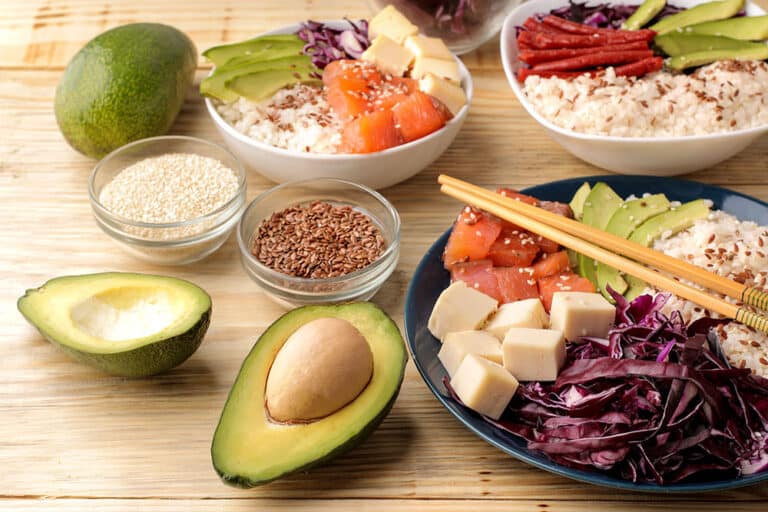Learn Valuable Information About Following a Low Fat Diet
Are you curious about the buzz surrounding low fat diets? You’re not alone. Many people are exploring this dietary approach for its potential health benefits and weight management strategies. While fats have long been vilified in the nutrition world, understanding what a low fat diet truly entails can open new doors to a healthier lifestyle. Ready to learn valuable information about following a low fat diet? Let’s dive into everything you need to know to make informed choices that work for you!
What is a Low Fat Diet?
A low fat diet focuses on reducing the intake of fats, particularly saturated and trans fats. Instead, it emphasizes lean proteins, whole grains, fruits, and vegetables.
Typically, this diet limits total fat consumption to around 20-35% of your daily calories. By doing so, it aims to promote overall health while supporting weight loss or maintenance.
The concept has evolved over the years. Initially seen as a means to combat obesity and heart disease, many now recognize that not all fats are created equal. Healthy fats from sources like avocados and nuts play important roles in our diets.
Understanding how to balance various nutrients is key when considering a low fat approach. It’s not just about cutting out foods but choosing healthier alternatives that fuel your body effectively.
The Health Benefits of a Low Fat Diet
A low fat diet can offer a variety of health benefits that may surprise you. By reducing overall fat intake, especially saturated and trans fats, many individuals find it easier to manage their weight. This is crucial for maintaining a healthy lifestyle.
Heart health improves significantly with lower fat consumption. Studies show that diets high in unsaturated fats can lead to reduced cholesterol levels, lowering the risk of heart disease and stroke.
Another advantage is enhanced digestion. A low fat diet often includes more fiber-rich fruits, vegetables, and whole grains, which support gut health and regularity.
Additionally, this dietary approach can boost energy levels. With less heavy food weighing you down, your body may feel lighter and more energized throughout the day.
Some people experience better mood stability on a low fat diet due to balanced blood sugar levels from nutrient-dense foods.
Common Misconceptions about Fat
Many people still associate dietary fat with weight gain and poor health. This misconception can lead to unnecessary fear of fats in food.
Not all fats are created equal. Healthy fats, like those found in avocados, nuts, and olive oil, play crucial roles in bodily functions. They help absorb vitamins and support cell growth.
Some believe that cutting all fat will result in quick weight loss. However, this approach often leads to nutrient deficiencies and can be unsustainable long-term.
Another myth is that low-fat alternatives are always healthier. Many processed foods labeled as “low-fat” can contain added sugars or unhealthy fillers instead.
Understanding the different types of fats is essential for making informed dietary choices. Embracing healthy fats while moderating less beneficial ones creates a balanced approach to nutrition without sacrificing flavor or satisfaction.
Foods to Include and Avoid on a Low Fat Diet
When embracing a low fat diet, it’s essential to know which foods can support your goals. Fresh fruits and vegetables should be your go-to choices. They are naturally low in fat and packed with vitamins, minerals, and fiber.
Whole grains like brown rice, quinoa, and whole grain bread are excellent sources of energy without the added fats found in refined options. Lean proteins such as chicken breast, turkey, fish, tofu, and legumes provide vital nutrients while keeping fat intake minimal.
On the flip side, avoid fatty cuts of meat like ribeye or pork belly. Processed snacks often contain unhealthy trans fats that can derail your efforts. Foods high in saturated fats—think butter and full-fat dairy products—should also be limited.
Choosing wisely will make a significant difference on your journey toward healthier eating habits.
Sample Meal Plan for a Week on a Low Fat Diet
A sample meal plan can help you navigate a low-fat diet with ease. Here’s a simple breakdown for one week.
Start your Monday with oatmeal topped with fresh berries and a splash of almond milk. For lunch, enjoy a quinoa salad loaded with veggies and lemon dressing. Dinner could be grilled chicken breast paired with steamed broccoli.
On Tuesday, opt for whole-grain toast and avocado in the morning. A turkey wrap filled with lettuce and tomatoes makes for a satisfying midday meal. Try baked fish seasoned lightly for dinner alongside asparagus.
Midweek offers room to switch things up. Wednesday’s breakfast could feature yogurt mixed with granola, while lunch is lentil soup packed full of flavor without excess fat. Stir-fried tofu and bell peppers are great options come evening.
Keep experimenting throughout the week by mixing lean proteins, whole grains, fruits, and vegetables in creative ways!
Tips for Sticking to a Low Fat Diet
Staying committed to a low fat diet can be challenging, but small adjustments can make a big difference. Begin by meal prepping your favorite dishes. Cooking in advance helps you avoid impulsive choices.
Keep healthy snacks on hand. Fresh fruits, veggies, and low-fat yogurt are great options. They satisfy cravings without derailing your goals.
Experiment with herbs and spices instead of high-fat sauces for flavor enhancement. This adds excitement to meals without the extra calories.
Stay hydrated too! Sometimes thirst masquerades as hunger. Drinking water regularly keeps you feeling full longer.
Find support within friends or online communities dedicated to similar dietary habits. Sharing experiences boosts motivation and accountability while making the journey enjoyable.
Alternatives to a Strict Low Fat Diet
If a strict low-fat diet feels too restrictive, consider adopting a moderate fat approach. This allows for healthy fats while still reducing overall intake. Incorporating sources like avocados, nuts, and olive oil can provide essential nutrients without heavy calorie loads.
Another option is the Mediterranean diet. It emphasizes whole foods, lean proteins, and good fats. You’ll enjoy flavorful meals while prioritizing health benefits.
Plant-based diets also offer flexibility. They focus on fruits, vegetables, legumes, and grains but still allow for some healthy fats from plant sources.
The DASH (Dietary Approaches to Stop Hypertension) diet is another alternative that balances macronutrients effectively. It’s great for heart health yet includes enough fat to keep you satisfied.
Listening to your body’s needs will help tailor these approaches suited just for you. Adjusting dietary guidelines based on personal preferences makes it easier to stick with any eating plan long term.
Conclusion
Following a low fat diet can be an effective way to improve overall health and well-being. By understanding what this type of diet entails, you can make informed decisions about your food choices. Embracing the benefits while dispelling common myths about dietary fats is essential for success.
With the right knowledge, including which foods to embrace or avoid, you can create satisfying meals that align with your goals. A sample meal plan provides inspiration and practical ideas to get started on your journey. Additionally, tips for maintaining adherence to a low fat lifestyle help ensure long-term results without feeling deprived.
If strict limitations feel overwhelming, remember there are alternatives available that still promote healthier eating habits without sacrificing enjoyment. Adapting a balanced approach allows flexibility while reaping the rewards of mindful nutrition.
Taking these insights into account equips you with valuable tools for navigating the world of low fat diets successfully. Your path toward improved health awaits!
- About the Author
- Latest Posts
Johnnie D. Jackow Sr., the founder and CEO of Total Body Fitness, Worldwide, has a long-standing career in the fitness industry. He began as a certified personal trainer in the mid-90s and soon after authored his first weight loss book in 1998. This led to the launch of Total Body Fitness, Nationwide in the USA at the same time. Johnnie gained recognition as the fitness guru of his time, running infomercials on local TV late at night in Houston, Texas. Over the years, he has helped more than 40,000 individuals from all over the world achieve their health and fitness goals. With over 60,000 hours of documented training in integrative functional medicine, he completed his PhD in human physiology in 2010. His primary objective is to assist people in reaching their health and fitness goals through alternative approaches rather than relying solely on conventional medicine and pharmaceutical drugs. Today, with almost three decades of experience under his belt, Johnnie continues to be a leader in health and fitness.







